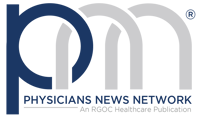Medicare's Accountable Care Organizations (ACOs) have operated for over a decade, with providers assuming responsibility and occasionally financial risk for a designated group of patients. While some ACO models have shown modest net savings, they haven't been a significant factor in curbing the growth of per-person Medicare spending, according to previous research by the Congressional Budget Office (CBO).
Certain ACO models tested by the Centers for Medicare & Medicaid Services (CMS) have led to increased federal spending, underscoring the imperative to enhance outcomes. This urgency is heightened as CMS aims to transition all 34 million beneficiaries in traditional Medicare into value-based arrangements by 2030.
The largest ACO program in Medicare, the Medicare Shared Savings Program, encompasses nearly 11 million beneficiaries across 480 ACOs. Participating ACOs are rewarded with a share of the savings they generate compared to a benchmark, while those with spending surpassing the benchmark may face penalties.
According to the CBO, Medicare ACOs led by independent physicians yield "significantly larger" savings compared to other models. This finding is significant given the trend towards hospital-owned ACOs, which, according to the CBO, have not demonstrated as substantial a reduction in spending.
A study published in JAMA last year revealed a rise in hospital-aligned beneficiaries, indicating a shifting landscape within ACOs. However, several factors hinder ACO savings, including weak financial incentives such as low shared savings rates. This disproportionately affects large health systems and hospitals, which risk losing fee-for-service revenue if they redirect patients away from their facilities without adequate reimbursement from Medicare.
While the CBO refrains from making policy recommendations, it highlights suggestions from researchers and experts to boost ACO savings. These include enhancing participation incentives, adjusting risk-sharing mechanisms, and potentially excluding non-participating providers from other savings programs.
In response to plateauing growth, regulators have recently revamped the Shared Savings Program, introducing upfront payments for certain providers and modifying benchmark methodologies to accommodate medically complex beneficiaries. Moreover, last year's updates expanded the program to include care from nurse practitioners, physician assistants, and clinical nurse specialists, reflecting a commitment to inclusivity and adaptability in pursuit of improved healthcare outcomes.

